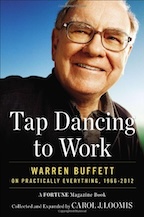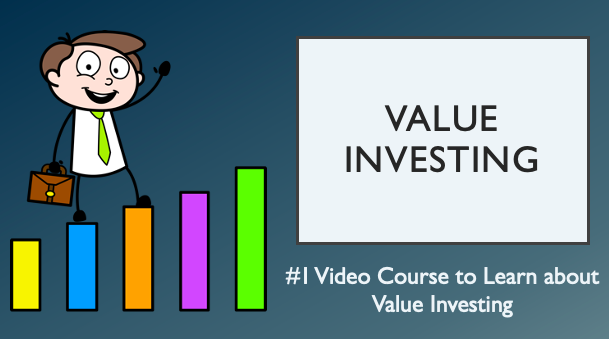Book Summary of Tap Dancing to Work- Warren Buffett on Practically Everything, 1966-2012
by Carol J. Loomis

What is this book about?
"Tap Dancing to Work: Warren Buffett on Practically Everything, 1966-2012" is a collection of articles and essays primarily written by Carol J. Loomis, a senior editor at Fortune magazine, along with contributions from Warren Buffett himself. The book chronicles the career and thoughts of Warren Buffett over nearly five decades, offering insights into his business philosophy, investment strategies, and his approach to management. It serves as both a biography of Buffett's professional life and a compilation of his most important business lessons, as seen through the lens of Fortune magazine's coverage.
Who should read the book?
This book is particularly suited for:
- Investors who want to learn from Warren Buffett’s vast experience in the stock market and his unique investment strategies.
- Business professionals interested in understanding Buffett’s management style and his views on corporate governance.
- Buffett enthusiasts who admire his work and want a detailed account of his career and philosophies.
- Students of finance and economics who wish to gain insights into practical applications of investment and business management principles.
- General readers who enjoy biographies and stories of successful individuals.
10 Big Ideas from the Book
- Long-Term Value Investing: Buffett emphasizes the importance of investing in companies with strong fundamentals and holding onto them for the long term rather than seeking short-term gains.
- Economic Moats: Buffett often talks about investing in companies that have a strong competitive advantage, or "economic moat," that protects them from competitors.
- Simplicity and Understanding: Invest in businesses you understand. Buffett advocates for staying within your "circle of competence."
- Management Integrity: One of Buffett's key criteria for investment is the integrity and competency of the management team.
- Philanthropy: The book discusses Buffett's views on wealth and philanthropy, culminating in his Giving Pledge, where he commits to giving away a significant portion of his wealth.
- Stock Market Efficiency: While Buffett acknowledges market efficiency, he also believes that inefficiencies exist that can be exploited by astute investors.
- Risk Management: Buffett's approach to risk involves thorough analysis and a margin of safety in investments to mitigate potential losses.
- Corporate Governance: He emphasizes the importance of strong corporate governance and the alignment of interests between shareholders and management.
- Economic and Market Insights: The book includes Buffett’s reflections on broader economic issues, such as inflation, trade deficits, and taxation, offering a macroeconomic perspective.
- Consistency in Strategy: Buffett's investment philosophy has remained consistent over the decades, focusing on value investing, patience, and disciplined decision-making.
Summary of "Tap Dancing to Work: Warren Buffett on Practically Everything, 1966-2012"
"Tap Dancing to Work: Warren Buffett on Practically Everything, 1966-2012" is a curated collection of articles, essays, and letters that provide an extensive look at Warren Buffett’s professional life and his business philosophy over nearly five decades. Compiled and expanded by Carol J. Loomis, a senior editor at Fortune magazine and a long-time friend of Buffett, the book presents a narrative of Buffett’s rise as one of the most successful investors in history. It offers a deep dive into his strategies, his views on the economy, and his role in shaping corporate America.
Key Insights and Themes
-
Value Investing:
- Buffett is a disciple of Benjamin Graham's value investing philosophy, which focuses on buying undervalued stocks of companies with strong fundamentals. This approach emphasizes the intrinsic value of a company, aiming to purchase stocks at a price lower than their intrinsic value.
- Significance: This forms the bedrock of Buffett’s investment strategy, allowing for substantial long-term gains while minimizing risk.
-
Economic Moats:
- Buffett looks for companies with durable competitive advantages, or "economic moats," that protect them from competitors. These moats can be in the form of brand reputation, cost advantages, network effects, or regulatory advantages.
- Significance: Companies with strong moats are likely to sustain profitability and growth over the long term, making them excellent long-term investments.
-
Management Integrity:
- Buffett places a high value on the quality and integrity of a company's management. He prefers to invest in businesses where the management team is competent, transparent, and aligned with shareholder interests.
- Significance: Trustworthy management ensures that the company is run in the best interest of shareholders, which is critical for long-term success.
-
Long-Term Perspective:
- Buffett advocates for a long-term investment horizon, often holding onto investments for decades. He believes in the power of compounding and the idea that the stock market is a vehicle for transferring wealth from the impatient to the patient.
- Significance: A long-term perspective helps investors weather short-term market volatility and capitalize on the compound growth of investments.
-
Circle of Competence:
- Buffett stresses the importance of investing within one's "circle of competence," meaning that investors should only invest in industries or businesses they thoroughly understand.
- Significance: By staying within their circle of competence, investors can make more informed decisions and reduce the likelihood of costly mistakes.
-
Philanthropy and Social Responsibility:
- Later in his career, Buffett became known for his philanthropic efforts, particularly through the Giving Pledge, which he initiated with Bill and Melinda Gates. He plans to give away the majority of his wealth to philanthropic causes.
- Significance: Buffett’s commitment to philanthropy reflects his belief in the importance of giving back to society and ensuring that wealth can be used for the greater good.
-
Risk Management and Margin of Safety:
- One of Buffett’s key principles is the concept of a "margin of safety," which means investing with a buffer that protects against errors in judgment or market downturns.
- Significance: This principle reduces the risk of significant losses, ensuring that even if the investment does not perform as expected, the impact on the portfolio is minimized.
-
Efficient Markets and Behavioral Economics:
- While Buffett acknowledges that markets are generally efficient, he believes there are inefficiencies that can be exploited by disciplined and knowledgeable investors. He also highlights the role of psychology in investing, particularly how fear and greed can drive market behavior.
- Significance: Understanding market inefficiencies and the impact of investor behavior can lead to better investment decisions.
-
Corporate Governance:
- Buffett has strong views on corporate governance, advocating for practices that align the interests of management with those of shareholders. He criticizes excessive executive compensation and poor management practices that do not serve shareholders.
- Significance: Good corporate governance is essential for the long-term success and integrity of a company.
-
Macroeconomic Insights:
- Throughout the book, Buffett shares his views on broader economic issues such as inflation, taxation, and trade deficits. He often provides a pragmatic approach to these issues, grounded in economic fundamentals.
- Significance: These insights help investors understand the broader economic environment in which businesses operate, informing better investment decisions.
Relevant Metrics and Key Concepts
-
Intrinsic Value:
- Definition: The true, inherent value of a company, based on its fundamentals, such as earnings, dividends, and growth prospects.
- Significance: Understanding intrinsic value helps investors identify undervalued stocks.
-
Economic Moat:
- Definition: A company’s competitive advantage that protects it from competitors.
- Significance: Companies with wide moats are more likely to sustain long-term profitability.
-
Circle of Competence:
- Definition: The range of industries or businesses that an investor thoroughly understands.
- Significance: Staying within this circle helps investors make informed and confident investment decisions.
-
Margin of Safety:
- Definition: The difference between a stock's market price and its intrinsic value, providing a buffer against risk.
- Significance: Ensures protection against downside risk in investments.
-
Return on Equity (ROE):
- Definition: A measure of a company's profitability, calculated as net income divided by shareholder equity.
- Significance: A higher ROE indicates a company is efficient at generating profits from shareholders' investments.
-
Compound Annual Growth Rate (CAGR):
- Definition: The rate of return that would be required for an investment to grow from its beginning balance to its ending balance, assuming the profits were reinvested each year.
- Significance: Buffett often uses CAGR to evaluate the performance of investments over time.
-
Price-to-Earnings (P/E) Ratio:
- Definition: A valuation ratio of a company's current share price compared to its per-share earnings.
- Significance: A lower P/E ratio might indicate an undervalued stock, while a higher ratio could suggest overvaluation.
-
Debt-to-Equity Ratio:
- Definition: A measure of a company's financial leverage, calculated by dividing its total liabilities by shareholders' equity.
- Significance: A lower ratio indicates a company is using less debt to finance its operations, which is often a sign of financial health.
-
Dividend Yield:
- Definition: A financial ratio that shows how much a company pays out in dividends each year relative to its stock price.
- Significance: Provides an idea of the income generated from an investment relative to its price.
-
Efficient Market Hypothesis (EMH):
- Definition: The theory that all available information is fully reflected in stock prices, making it impossible to consistently outperform the market.
- Significance: While Buffett acknowledges the EMH, he believes that disciplined investors can still find opportunities in market inefficiencies.
Conclusion
"Tap Dancing to Work" is not just a biography of Warren Buffett but a comprehensive guide to his investment philosophy and business acumen. The book highlights the principles that have guided Buffett throughout his career and provides practical insights that are valuable to both novice and experienced investors. By focusing on key metrics like intrinsic value, ROE, and the importance of economic moats, the book underscores the strategies that have made Buffett one of the most successful investors in history.
Which Other Books Are Used as Reference?
The book references various articles and works that have influenced Buffett’s thinking and have been part of his journey. Some key references include:
- "Security Analysis" by Benjamin Graham and David Dodd: This is one of Buffett’s foundational texts on value investing.
- "The Intelligent Investor" by Benjamin Graham: Another fundamental work that influenced Buffett’s investment philosophy.
- Articles from Fortune magazine: The book itself is a compilation of articles from Fortune, many of which discuss broader business and economic issues that have shaped Buffett’s approach.
Browse Summaries of Top Investing books!
You may also like the below Video Courses



